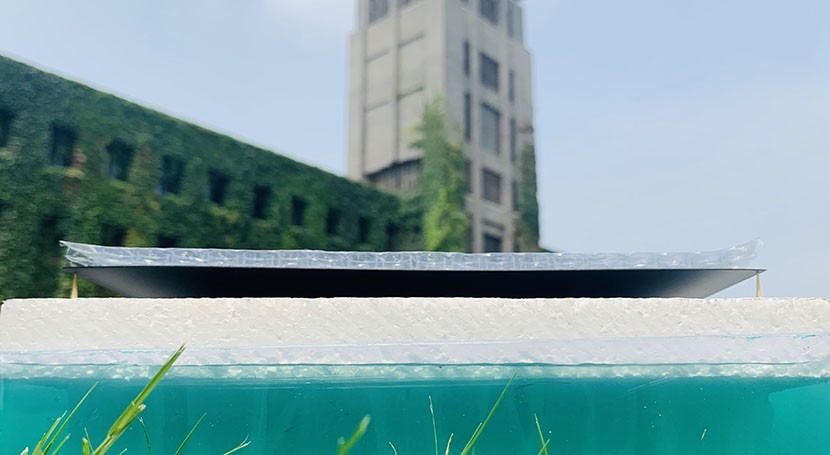Researchers at Nanjing University have designed a solar-driven desalination system to produce high-quality freshwater and sea salt at the same time. Such systems are promising to broadly benefit off-grid arid coastal areas by providing an efficient, low-cost water source with added benefit of economic gain from recovering valuable sea salt.
The system utilizes infrared photons as a heat source and low-cost paper layers to accumulate sea salt. It is described in the Journal ACS Applied Materials & Interfaces, in a paper by Associated Professor Kun Tang, Professor Shulin Gu and seven others at Nanjing University in China.
Solar-driven water evaporation, as a cost-effective and eco-friendly way to produce high-quality freshwater from saline water, is a burgeoning and promising force in the battle against global thirst. However, unsustainable vapor generation caused by salt accumulation has always plagued researchers. The core contradiction is that water is transparent and has poor absorption, while salt is white which strongly reflects in sunlight.
“Water is black and salt is transparent in infrared range”, Gu says. “You need take full advantage of this”.
The key to the system’s success lies in that the solar energy was down-conversed into infrared photons. In order to achieve this energy down-conversion process, the team uses a special plate whose upper surface can fully absorb sunlight and the lower surface radiates infrared light. A transparent bubble wrap is placed on top of the pannel, serving as a convective cover to minimize the convection loss caused by air flow.
Their desalination system was built mostly from low-cost materials with the total cost of $8.27 per square-meter
The whole structure is supported by a polystyrene foam and floats on the sea surface. A 2D water path is constructed by wrapping a thin paper on the foam. The paper pumps water spontaneously under the synergistic effect of the capillary force and the absorptive nature of the hydrophilic cellulose fiber. In this way, fresh vapor generates constantly and sea salt is left on the paper surface.
The quality of the condensed water has been strictly tested and the ion concentrations decreased significantly below the maximum allowable values defined by the US Environmental Protection Agency (EPA, 0.5‰) and the World Health Organization (WHO, 1‰) for drinking water.
Their desalination system was built mostly from low-cost materials with the total cost of $8.27 per square-meter. Unlike most other solar desalination systems which repel the salt into the tank to achieve sustainable solar evaporation, sea salts are taken out during evaporation in this system, so the construction cost of evaporation ponds (mainly the expense of impervious liners to prevent seepage of saline water into aquifers) will decrease, Gu says. “The cost should be as low as possible.”
Gu emphasizes that this system can also serve industrial waste water to provide a low-cost water source with added benefit of economic gain from recovering valuable heavy metals.
The key lies in that the reflected light from the solute surface can be recycled by the upper emitter to drive evaporation. This process is quite similar to the greenhouse effect that provides the warmth of our ecosystem, in which the infrared radiation from the earth’s surface, that should have dissipated to the outer atmosphere to balance the Earth’s temperature, is absorbed and re-radiated back by the increasing greenhouse gasses.




